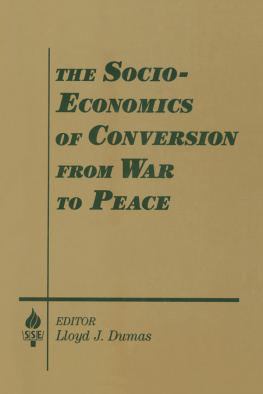THE ART OF
MILITARY DECEPTION
By the same author:
East Versus West (Gallery)
Modern Combat Uniforms (Brian Todd Publishing)
Combat Uniforms of the Civil War (Brian Todd Publishing
The Concise Illustrated Book of Military Badges and Insignia (Brian Todd Publishing)
The Concise Illustrated Book of Tanks (Brian Todd Publishing)
Tactics of Modern Warfare (Brian Todd Publishing)
The Guinness Book of Espionage (Guinness)
The Guinness Book of Helicopter Facts and Feats (Guinness)
History of the United States Army (Brian Todd Publishing)
Special Forces: the Changing Face of Warfare (Arms & Armour Press)
First published in Great Britain in 1997 by
LEO COOPER
Published in 2003 by
PEN & SWORD S E L E C T
an imprint of
Pen & Sword Books Limited
47 Church Street
Barnsley
South Yorkshire
S70 2AS
Copyright Mark Lloyd, 1997, 2003
ISBN 1 84468 010 X
The right of Mark Lloyd to be identified as author of this
Work has been asserted by them in accordance with the
Copyright, Designs and Patents Act, 1988
A CIP catalogue record for this book
is available from the British Library
Printed in Great Britain by
CPI UK
CONTENTS
INTRODUCTION
The art of military deception is as old as warfare itself. It has long been regarded as a force multiplier and has been employed by virtually every successful campaigner in military history. Inevitably early attempts at deception were constrained by the severe limitations in command, control and communications available to their authors. Nonetheless tacticians such as Sun Tzu, a Chinese general who lived more than 2,400 years ago, were able to practise the art to devastating effect.
Deception at Jericho
The Old Testament provides a fascinating insight into early military history, with many examples of the use of deception. During the thirteenth century BC, when Joshua and the Israelites were laying siege to Jericho he sought the aid of divine inspiration. The instructions which he received were indeed strange (Joshua 6: 25):
And the Lord said unto Joshua, See, I have given into thine hand Jericho. and ye shall compass the city, all ye men of war, and go round about the city once. Thus shalt thou do six days. And seven priests shall bear before the ark seven trumpets of rams horns: and the seventh day ye shall compass the city seven times, and the priests shall blow with the trumpets And it shall come to pass, that when they make a long blast with the rams horn, and when ye hear the sound of the trumpet, all the people shall shout with a great shout; and the wall of the city shall fall down flat.
Joshua obeyed his unlikely orders; on the seventh day the priests duly blew their trumpets, the people dutifully shouted and the walls were indeed breached. Nobody has ever established precisely why Joshuas tactics were so successful. It has been suggested that the rhythmic step of the besiegers feet sent shock waves through the ground, but this is unlikely in the extreme. It is possible that an earthquake shattered the city walls at the precise moment that the Israelites readied their assault, but again this is most improbable.
It is more likely that the actions of the Israelites lulled the citizens of Jericho into a state of complacency. The attackers daily march around the walls, while initially alarming, would after a few days have become a matter of tedious and noisy routine. Indeed, it is highly possible that by the seventh day it had become so much a matter of routine that the change in length and intensity of the by now regular ceremony would have passed largely unnoticed by the defenders. They would probably not have stood-to, and would therefore have left the ramparts largely unmanned. This would have enabled the Israelites, on a given order, to storm the walls, which they were then closely surrounding, with little immediate opposition.
As warfare became more static the initiative passed firmly to the defenders. Lacking weapons heavy enough to destroy the ramparts of the great fortifications then in existence, the attackers could only hurl themselves against the weaker points of the ramparts in the hope of wearing the defenders down in a campaign of bloody and often pyrrhic attrition.
Where possible the more versatile attackers resorted to deception. The story of the Trojan Horse is well known and will be recounted in greater detail in Chapter Three. It was not unique. Thot, a general of Thutmose III, captured the strongpoint of Jaffa by seemingly surrendering and then, when the inhabitants opened the gates, rising and storming the city. In 1288BC, during the Battle of Kadesh, the Hittites sent two deserters to Ramses II to feed him false information about the state of morale of their army. Ramses was lured northwards into a trap from which he was lucky to escape.
When generals fail to learn the lessons of the past, history surely repeats itself. Two millenia later, in 1879, the British forces in Zululand allowed themselves to be lured into a false sence of security by three prisoners who had been planted by the enemy king, Catewayo. The Battle of Isandhlwana which followed represented one of the greatest humiliations in the history of the British Army.
Sun Tzu and the Art of War
Sun Tzu produced the first great treatise on the art of war. It is now considered too simplistic for the prosecution of modern combat. However, it was studied to great effect by Mao Tse Tung during his campaign against the Nationalists, and remains an important influence on todays Peoples Liberation Army.
Little is known about the early life of Sun Tzu save that he was a probable contemporary of Confucius. He was born about 500BC and followed his father, Sun Ping, into the military. Sun Tzu regarded war as more than a mere competition between military forces. He saw it as a comprehensive struggle embracing politics, economics, military force and diplomacy, which would allow the victor to survive while condemning the vanquished to ruin.
Sun Tzu saw war as a matter of deception in which the enemy had to be thrown into a state of confusion by the sudden introduction of unexpected factors, such as specially trained troops employing irregular tactics. They had to be disguised as conventional troops and could only be committed once the enemys weaknesses had been established.
The principles of surprise were used to excellent effect by Tian Dan, a local warlord, in 279BC. When besieged in the city of Jumo he collected more than 1,000 oxen and covered each with a colourful cloth. He then tied daggers to their horns and dried reeds dipped in oil to their tails. He assembled 5,000 of his best soldiers all disguised as monsters, and when night fell lit the reeds on the oxens tails. The oxen stampeded towards the enemy camp followed by the 5,000 specialist soldiers. The enemy, taken by complete surprise, were thrown into utter chaos and annihilated.
In 205BC Han Xin adopted the principles of Sun Tzu when forcing a crossing of the Yellow River. Having established an obvious crossing point, he made very patent preparations to force a bridgehead there. Once the enemy were committed to defending the area he moved the majority of his forces in complete secrecy to an alternative, virtually unguarded fording point. Having forced a crossing without resistance he quickly moved to attack the enemy from the rear. In 1944 the Allies employed a similar deception when they convinced German Intelligence that the principal invasion of France would be directed against the Pas de Calais and not Normandy.












